Art & Exhibitions
A New Exhibition of Artworks Recovered From Shipwrecks Reveals Some Fascinating—and Troubling—Histories
A show at the Asian Art Museum in San Francisco does not shy away from big issues.
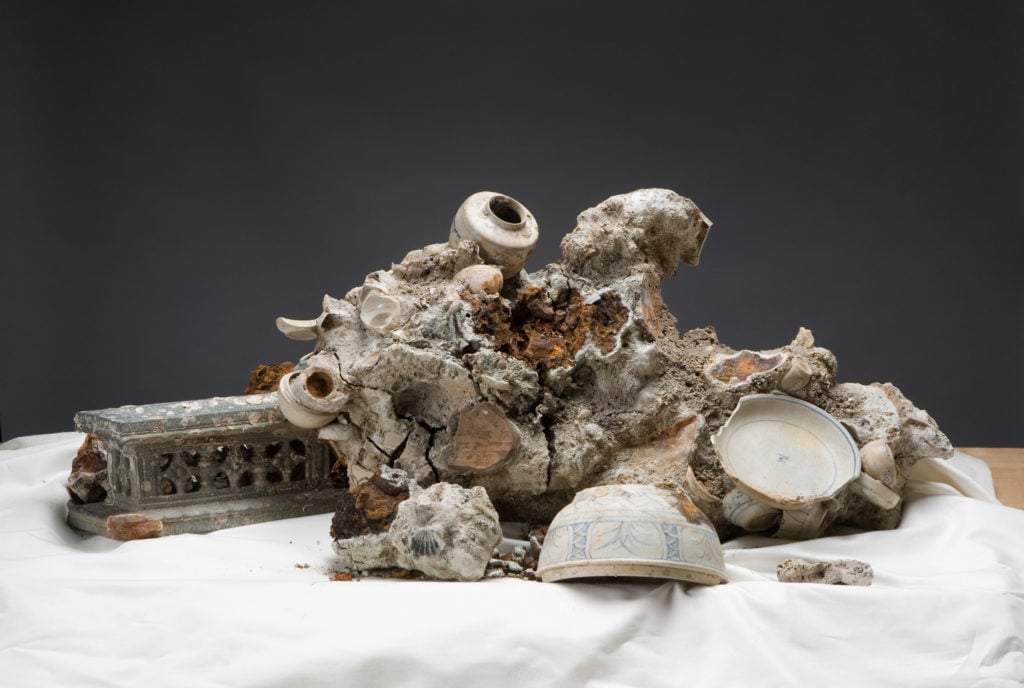
A show at the Asian Art Museum in San Francisco does not shy away from big issues.

Sarah Cascone

Salvaged from watery depths, the sunken treasures from a pair of shipwrecks lay underwater for hundreds of years before being acquired by the Asian Art Museum in San Francisco.
Now, these artifacts, including a pair of massive 12th-century stone statues and a trove of blue and white ceramics, will star in “Lost at Sea: Art Recovered From Shipwrecks,” a new exhibition drawn exclusively from the museum’s collection.
But while there is a certain romance to shipwrecks, one of the museum’s main goals is to educate viewers about three conflicting viewpoints among marine archaeologists about how to conduct excavations.
“Some believe that nothing should be brought up. You should just look, record, and leave it there,” the show’s curator, Natasha Reichle, tells artnet News. “Some believe you can bring it up, but with only an academic crew.
“A third group believes that most countries cannot protect these sites from looting, and that excavations in conjunction with private–public [entities] are the only way of protecting and learning about these materials.”
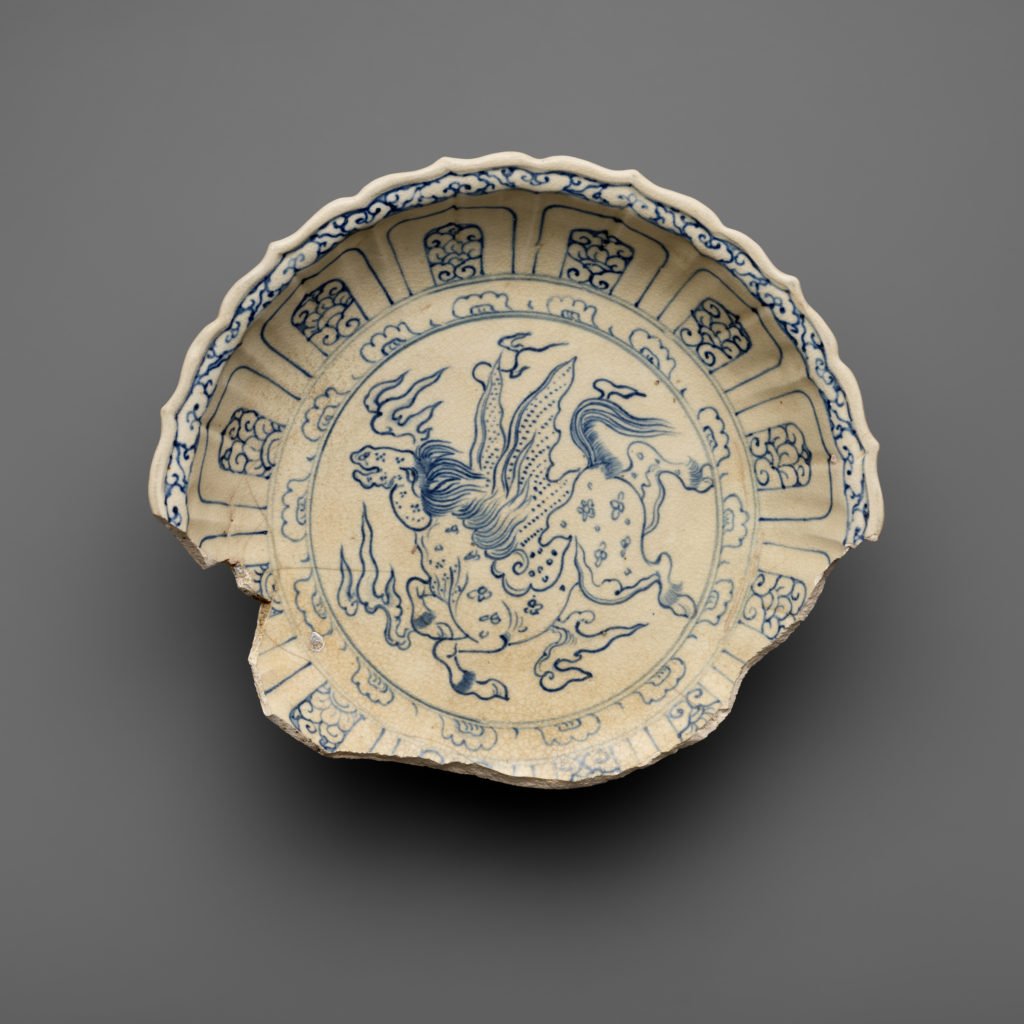
Fragmentary dish with design of a winged horse (circa 1450–1500) from northern Vietnam. Photo courtesy of the Asian Art Museum, San Francisco. Photo courtesy of the Asian Art Museum, San Francisco.
Beyond those perspectives, the show also offers an intriguing look at how recoveries are actually done. “These objects that you see in museums often have these interesting life stories behind them,” says Reichle. “Shipwrecks are a good way of grabbing people to show how fascinating history is—they are this time capsule in a lot of ways, showing how people worked, and traded, and moved.”
The ceramics in the show come from the Hoi An, a 15th-century trading vessel that was carrying around a quarter of a million individual ceramics when it crashed in the South China Sea.
No one knows exactly how the ship went down. “There are no reefs, and there is no evidence of a fire,” Reichle says. The only promising clue recovered from the wreckage were seeds from fruits that grow late in the season. “One theory is that for some reason the ship took off very late in the year, encountered a seasonal typhoon, and sank.”
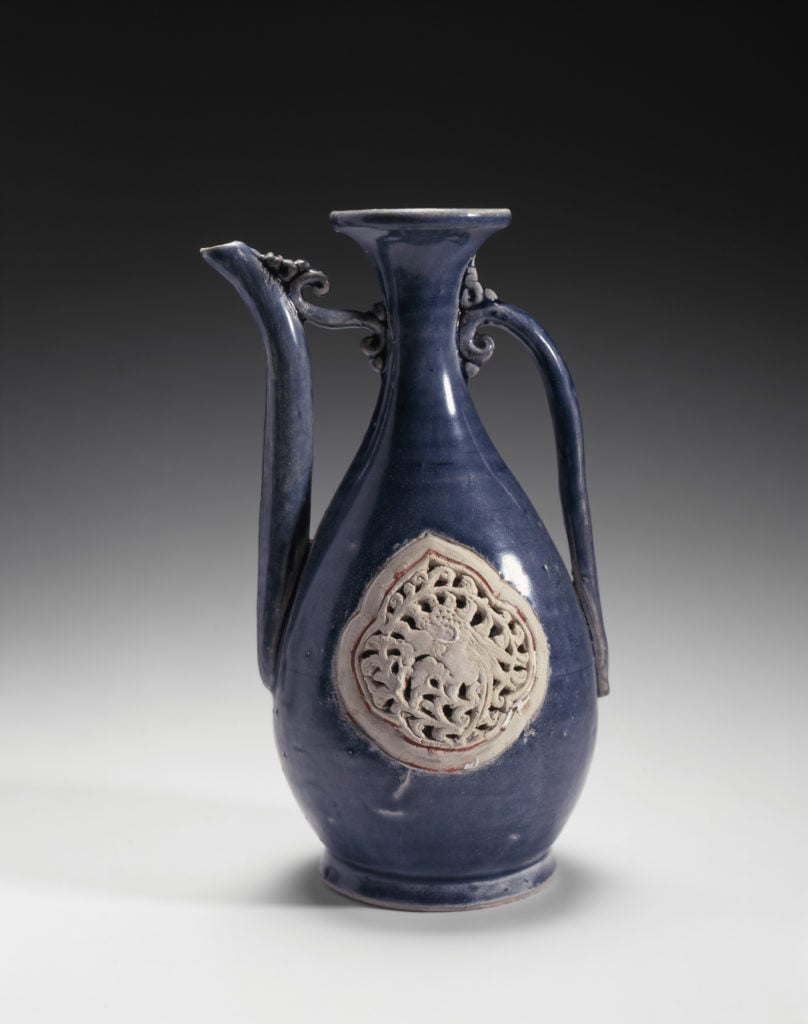
Pouring vessel with openwork panels (circa 1450–1500) from northern Vietnam. Photo courtesy of the Asian Art Museum, San Francisco.
The wreck was found after smugglers were caught in the Vietnamese airport with suitcases full of ceramics in the 1990s.
“The government tracked down the wreck and formed an alliance with an Oxford archaeology team and Vietnamese and Malaysian salvage companies,” Reichle says. “The ship was in very, very deep water—at that point, it was the deepest marine excavation ever attempted.” The first attempted recovery was dashed when the recovery ship was almost capsized by a typhoon, she says.
To safely retrieve the ship’s contents, the only option was saturation diving. “You keep the divers down underwater for a period of weeks,” Reichle says.
Among the objects eventually acquired by the museums is a lump of assorted materials that grew together due to corrosive conditions on the ocean floor. Included in that lump were a deer antler and a Chinese coin.
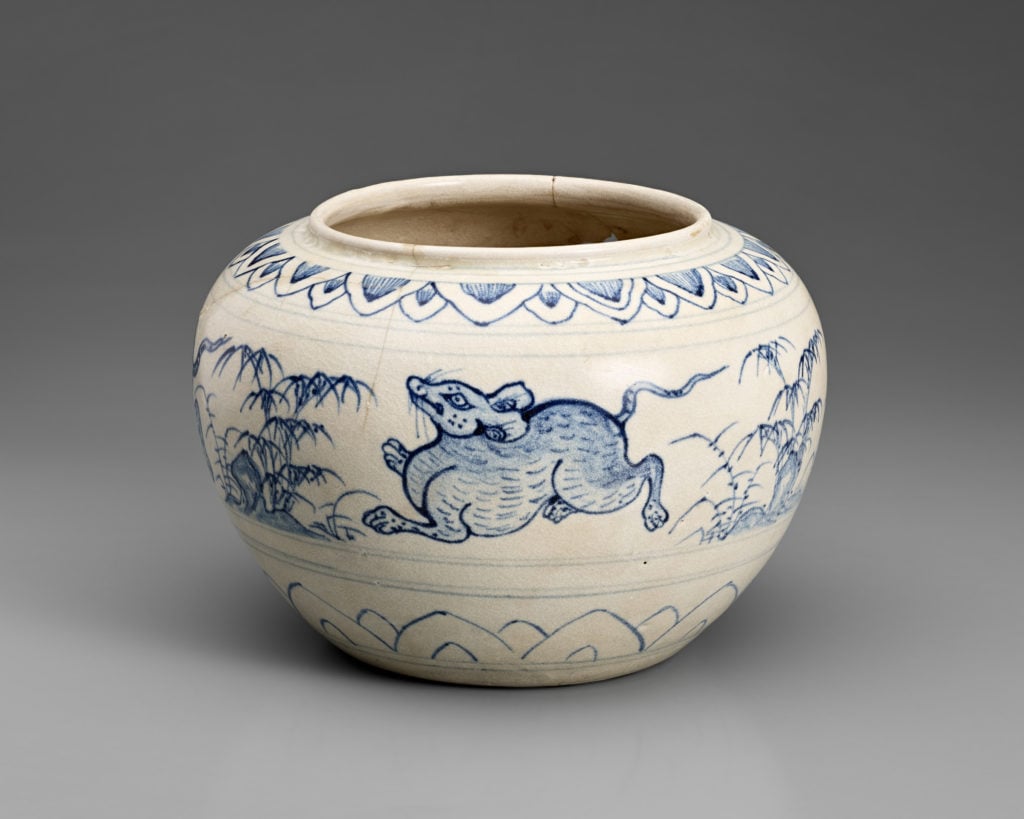
Blue-and-white jar (circa 1450–1500) from northern Vietnam. Photo courtesy of the Asian Art Museum, San Francisco.
The second wreck featured in the show was a French steamboat discovered 5,000 miles away in the Arabian Sea, just off the coast of Somalia. Aboard that ship were a pair of 12th-century stone sculptures from central Vietnam. (The works were taken from the country around 1875 by Albert Morice, a naturalist stationed at Vietnam’s French embassy.)
“Almost all the people survived [the wreck], but almost everything on the ship was looted, except these sculptures that were so heavy, they just sank to the bottom,” Reichle says.
In 1995, amid the Somali Civil War, French marine archaeologist Robert Stenwi went out to cover the boat’s contents.
“Robert was negotiating with the faction that was in control of the northeast area of Somalia,” Reichle says. “The team needed to get armed guards to protect them, and to use dynamite to blow up the hull.”
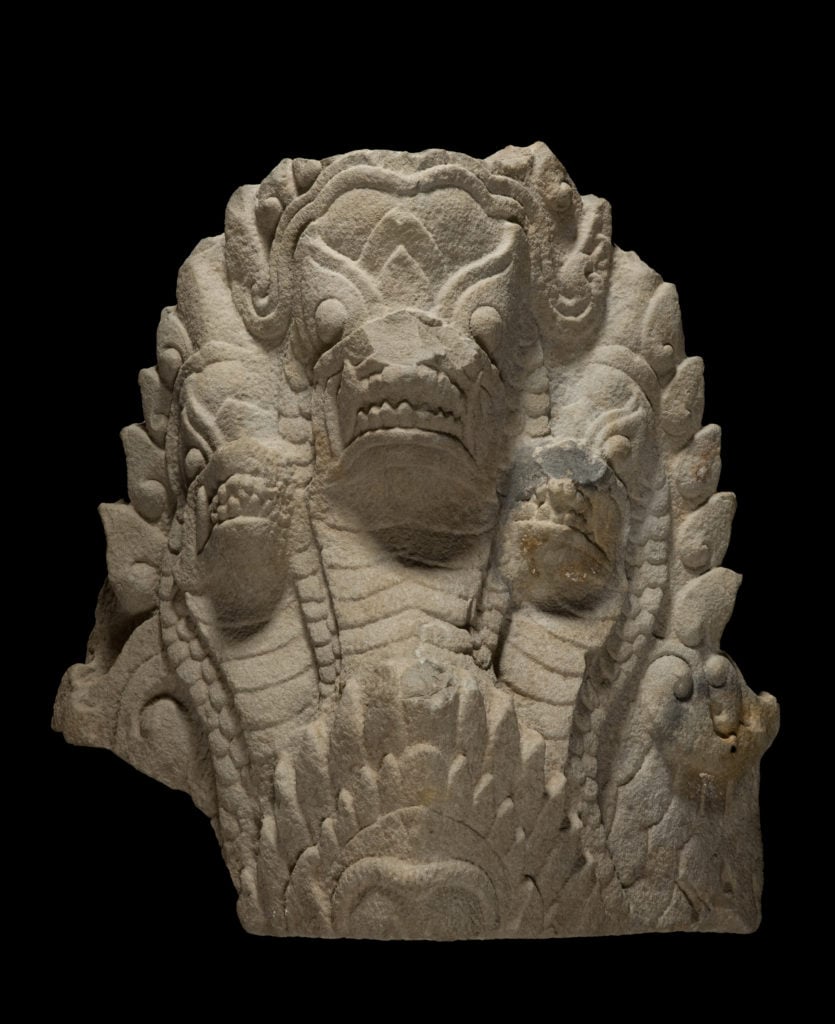
Architectural element with a multi-headed mythical serpent (circa 1150–1250) from Vietnam; Binh Dinh province, former kingdoms of Champa. Photo courtesy of the Asian Art Museum, San Francisco.
The statues eventually went to England for conservation before being sold at auction, and two of them were since donated to the Asian Art Museum.
But the recovery raises some ethical questions that Reichle’s show directly addresses.
“The people who produced these sculptures no longer have a state,” Reichle says. “The Cham are now a diasporic community scattered throughout Southeast Asia. If one were to restitute the object, where would you even return it?”
“Lost at Sea: Art Recovered From Shipwrecks” will be on view at the Asian Art Museum, 200 Larkin Street, San Francisco, California, November 26, 2019–March 22, 2020.